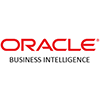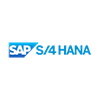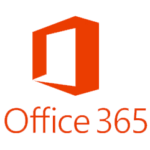Introduction
In today’s fast-paced technological landscape, the importance of control assurance in risk management is incredibly vital. Organizations face a complex web of regulations and a host of both internal and external risks. Therefore, ensuring that controls are effective is of utmost importance. This is particularly true for Chief Information Security Officers (CISOs), Chief Information Officers (CIOs), IT managers, and compliance officers, who play a pivotal role in upholding their organizations’ digital security and integrity. In this environment, control assurance is more than just a compliance requirement; it’s a strategic asset that significantly reshapes how we approach risk management and maintain operational integrity in the digital transformation era.
What is control assurance?
Control assurance is a critical aspect of risk management and governance within organizations. It involves systematically evaluating internal controls—procedures and mechanisms implemented to manage and mitigate risks—to ensure they operate effectively and efficiently. This process typically includes testing and monitoring controls to verify their effectiveness in protecting assets, ensuring accurate and reliable financial reporting, and achieving compliance with relevant laws and regulations. Control assurance helps organizations identify potential weaknesses or failures in their control environment, enabling them to make informed decisions and take proactive measures for improvement. It’s essential for maintaining organizational integrity, preventing fraud, and upholding stakeholder confidence. Control assurance is vital in supporting sustainable and secure business operations in today’s complex and rapidly changing business landscape.
What are controls, and why are they needed?
Whether human-driven or system-based, controls are a critical activity designed to manage specific risks to an acceptable level. These controls are a defensive wall against an organization’s security and operational efficiency threats. Effective control extends beyond mere implementation; it requires rigorous testing to ensure operational functionality and effectiveness.
Understanding Testing of Operational Effectiveness of Controls
This testing of the operational effectiveness of the controls, often involving evidence examination or control reperformance, is vital in reassuring stakeholders of the organization’s resilience against risks. This is an early warning in case controls fail.
 The above diagram illustrates the overall control assurance process at BAAR
The above diagram illustrates the overall control assurance process at BAAR
How are Controls Tested for Operational Effectiveness?
Testing controls for operational effectiveness is critical to risk management and compliance in any organization. This process involves several key steps to ensure that controls are properly designed and operating effectively and efficiently. Here’s an overview of how controls are typically tested:
- Identify and Classify Controls: Before testing, it’s important to identify all the controls in place and classify them. Controls can be preventive or detective, manual or automated. Understanding the nature and purpose of each control is crucial for effective testing.
- Determine the Testing Method: There are various methods to test controls, including:
- Inquiry: Gain understanding through discussions with personnel responsible for control.
- Observation: Directly observing the control process in action.
- Inspection: Examining physical or digital evidence that the control has been performed (e.g., logs, reports).
- Reperformance: The tester independently executes the control to verify its effectiveness.
- Develop a Testing Plan: This plan should detail what controls will be tested, the methods used for testing, the frequency of testing (e.g., annually, quarterly), and who will perform the tests. The plan should align with the organization’s risk assessment, focusing more on areas with higher risk.
- Execute the Testing: Carry out the tests as per the plan. This involves collecting and examining evidence, observing processes, and reperforming controls. This might include testing the underlying algorithms or software functionalities for automated controls.
- Evaluate Results: After testing, evaluate the effectiveness of each control. This includes assessing whether the control is functioning as intended and if it is adequate to mitigate the identified risks. If weaknesses or failures are identified, they should be documented.
- Report Findings: The control testing results should be compiled into a report for management and other stakeholders. This report should include findings, any deficiencies or exceptions noted, and recommendations for improvement.
- Remediate Deficiencies: If deficiencies are found, it’s important to address them promptly. This might involve adjusting the control, enhancing procedures, or providing additional training to personnel.
- Continuous Monitoring and Review: Controls should be continuously monitored for environmental or operational changes that might affect their effectiveness. Regular reviews should be conducted to ensure that the controls are aligned with current risks.
- Update Documentation: Finally, ensure that all documentation related to controls and their testing is updated to reflect the current state. This includes updating any changes made to the controls, testing results, and remediation actions taken.
By following these steps, organizations can ensure that their controls are effective and continue to mitigate risks in a dynamic operational environment.
Challenges in Control Assurance
Control assurance is vital for organizations to manage risks and maintain compliance. However, this critical process is challenging, especially in an era where technological advancements rapidly reshape the threat landscape. According to a report by Shared Services Canada, “it is challenging for the workforce to keep pace with these changes as technology advancements are outpacing the available skills required” (Shared Services Canada. (n.d.). Network security strategy. Government of Canada. Retrieved from https://www.canada.ca/en/shared-services/corporate/publications/network-security-strategy.html). This statement highlights the gap between emerging technologies and the available skill set in the workforce, which is just one of the many challenges in control assurance.
- Limited Resource Bandwidth: Many organizations face constraints in terms of resources, which limits their ability to monitor and test controls comprehensively. This challenge becomes more pronounced as the scale and complexity of operations grow.
- Laborious Processing and Information Gathering: Traditional methods of control assurance often involve tedious processes and extensive information gathering, which can be time-consuming and inefficient, detracting from the overall effectiveness of the control systems.
- Competing Business Priorities: Organizations often juggle multiple priorities, and aligning control assurance activities with these varying objectives can be challenging. It requires careful planning and resource allocation to ensure that control assurance does not fall behind.
- Distributed Data: In the age of big data and cloud computing, data is often distributed across various platforms and locations, making it challenging to effectively establish a comprehensive control assurance strategy that encompasses all data points.
- Technological Diversity Within Environments: The diversity of technologies used within modern organizations adds an additional layer of complexity to control assurance. Different systems and technologies may require unique approaches to control and monitoring, complicating the overall assurance process.
While control assurance is an indispensable aspect of modern organizational strategy, it is fraught with challenges that require innovative and adaptive solutions.
The Value of a Control Assurance Dashboard
A control assurance dashboard provides real-time insights into control effectiveness, identifies areas of vulnerability, and enables quick corrective actions. This level of visibility and agility is crucial in a dynamic business environment. For instance, a leading tech company might use a control dashboard to identify risk areas swiftly, minimizing potential damage and maintaining customer trust.
Evolution of Control Assurance
Control assurance continuously evolves, with new technologies and methodologies enhancing accessibility, practicality, and effectiveness. Innovations such as AI-powered analysis and RPA-enhanced processes significantly transform control assurance, making it more efficient and insightful. These advancements promise to redefine the landscape of control assurance, making it an indispensable tool for modern organizations.
Conclusion
The need for robust control assurance is evident in today’s technology-centric world. It is essential to any organization’s risk management strategy, providing crucial defenses against various threats. As technology advances, so will the methods and practices of control assurance, ensuring it remains a strategic advantage for those tasked with safeguarding their organizations’ operational integrity and compliance.
Explore BAAR Technologies’ Innovative Approach to Control Assurance
As you’ve seen, control assurance is critical in navigating the complexities of today’s tech-driven world. The challenges are many, but the solutions can be straightforward and effective with the right approach. This is where BAAR Technologies makes a difference. We invite you to discover how our cutting-edge approach to control assurance can transform your organization’s risk management strategy.
At BAAR Technologies, we understand the intricacies of control assurance and the importance of staying ahead in a rapidly evolving digital landscape. Our solutions are designed to address your organization’s unique challenges, from resource constraints to efficient management of diverse technological environments. Our innovative control assurance dashboard gives you real-time insights into control effectiveness, enabling swift action and maintaining the highest operational integrity and compliance standards.
Don’t let the challenges of control assurance slow down your progress. Join us at BAAR Technologies and step into a world where control assurance is more than just a compliance requirement—it’s a strategic asset that propels your organization forward. Contact Us today and find out how BAAR Technologies can add value to your control assurance initiatives.













